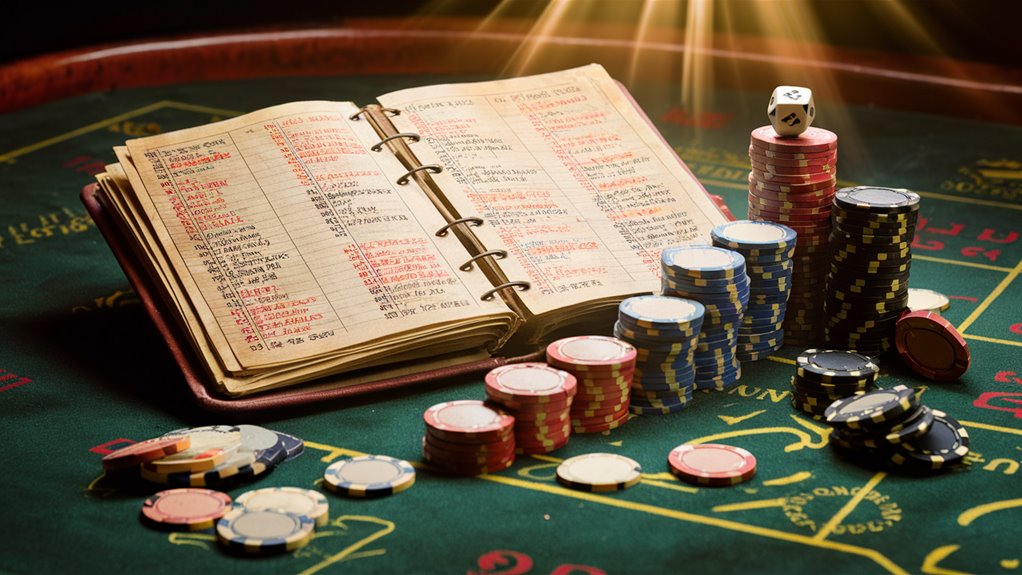
Luck’s Role in Long Game Wins

How Casinos Use Math and Chance
Math leads all casino games with set math edges – from 0.5% edge in blackjack to 5.26% in roulette. These solid numbers are key to how casinos earn money and how players fare, no matter what goes down in the short run. 먹튀검증 순위
Smart Gambling Ways and Cash Rules
Sharp gamblers use firm cash rules, often betting just 2-3% per game from a big cash pile of 300-500 times that bet. This math method helps handle ups and downs and stops big money fails when luck goes south.
Highs and Lows and What’s True
Big turns in wins and losses stem from usual shifts in game scores. Yet, the big count law shows that over time, scores stick to math plans. This tells us short luck doesn’t weigh much as you play more.
Skill vs. Luck in Pro Games
Long-term wins in betting lean more on wise choices and staying with a method than on luck. Pro gamers stay ahead with:
- Thick math homework
- Smart bet systems
- Solid cash rules
- Choosing smart games
- Keeping cool
All these, not luck, pick if you’ll keep earning money over time.
Taking Luck and Chance in Games
The Math Part of Game Luck
Luck and chance laws set the stage for wins in games, not player skill or plans.
Game luck is just the math shift between what should happen and what does when you play just a few times. In casinos, this is seen as short stints away from what should happen.
How to Check How Much Luck Plays a Part
Math checks give true ways to see how much luck sways things through chance tests and shift counts.
For instance, in roulette with one zero, red/black bets should win 48.6% of the time, but real short runs will vary much. Over loads of games, though, results will match the math as the big number law kicks in.
Truth vs. False Views of Luck
Game math proves luck is a real thing you can track, not some odd force.
Deep tests split skill parts in games like poker from just luck in slots or roulette.
Plain math signs like Money Back to Player (RTP) rates and edge notes tell just how much luck shifts things, using real plays against pure luck.
Main Chance Bits in Games:
- Finding expected values
- Checking usual game changes
- Making random number lists
- Tracking shifts in stats
- Learning about chance ranges
Getting Math Chance vs. Random Bits in Games

The Big Split in Game Math
Math chance and random parts are two key ideas that many mix up.
The core split is seeing that long-run chance doesn’t fix short-run events. Math shows a coin flip lands on heads 50% over many tries, but this doesn’t shift each single flip.
What You Expect vs. What Differs
Game luck works in two ways: what you expect from math and random shifts.
Think of blackjack luck: pulling a ten-value card is 30.8% likely, but each pull is still up for grabs. Pros use these odds to plan well, even as they know each hand is a toss-up.
Big Count Law and Real Game Life
The big count law shows that real plays will line up with math luck after many goes. But, this law doesn’t let us know what comes just now.
Many fall for the game player’s false idea, wrongly thinking past flips change future random chances. Winning at games means knowing that math luck aids plans, while realizing each play is on its own.
Main Game Luck Ideas:
- Single events don’t care about past results
- Stats meet only after lots of tries
- Luck math aids plans but doesn’t guess single results
- Random sets run each game chance
Pro Gambling and Data Edge: Facts Lead Here
The Math of Winning as a Pro
Math luck is the base of pro gambling wins.
Top players win with math edges and following firm cash rules. Their smart moves turn betting from a luck game to a planned task.
Smart Game Picks and Using Edges
Pros focus on skill spots where knowing more can shift results.
Poker and betting on sports are key ways, where reaching steady win rates of 53-55% brings big long cash. These rates, though small, add up much over many plays.
Smart Risk Plans
Keeping Cash Safe Plans
Winning pros track all plays over thousands of games.
They use mixing game kinds plans across many betting fields, guarding against dips in one spot. Most keep huge cash piles of 300-500 bet sizes to handle changes while they stick to their plans.
Making Choices on Data
Long-run expected values drive pro gambling choices, not just right-now results.
Big players know ups and downs will happen, making smart cash use and risk checks key for long play. This careful way sets pro gambling apart from just for-fun plays.
Getting Ups and Downs and Hot Streaks in Gambling
The Math Behind Winning and Losing Streaks
Math luck shows that win and loss streaks are just normal math events, not magic luck times.
Change, the key math sign of result range, shows why gamblers see good and bad times in their game wins, regardless of skill.
Checking Shifts in Casino Games
Math checks on game results show that changes make natural ups and downs that seem like hot or cold times. Exploring the Best Payment Options for Online Gambling
In blackjack plans, even players with a 1% math edge will lose in 48% of games due to usual swing patterns.
Pro poker players often see rough runs that last hundreds of hands, even if they play their best.
Long Math Luck vs. Short Wins
Random changes can trick players into seeing lines where there are none.
The key big count law shows that results will follow what’s expected, but you need lots of plays for this to show.
